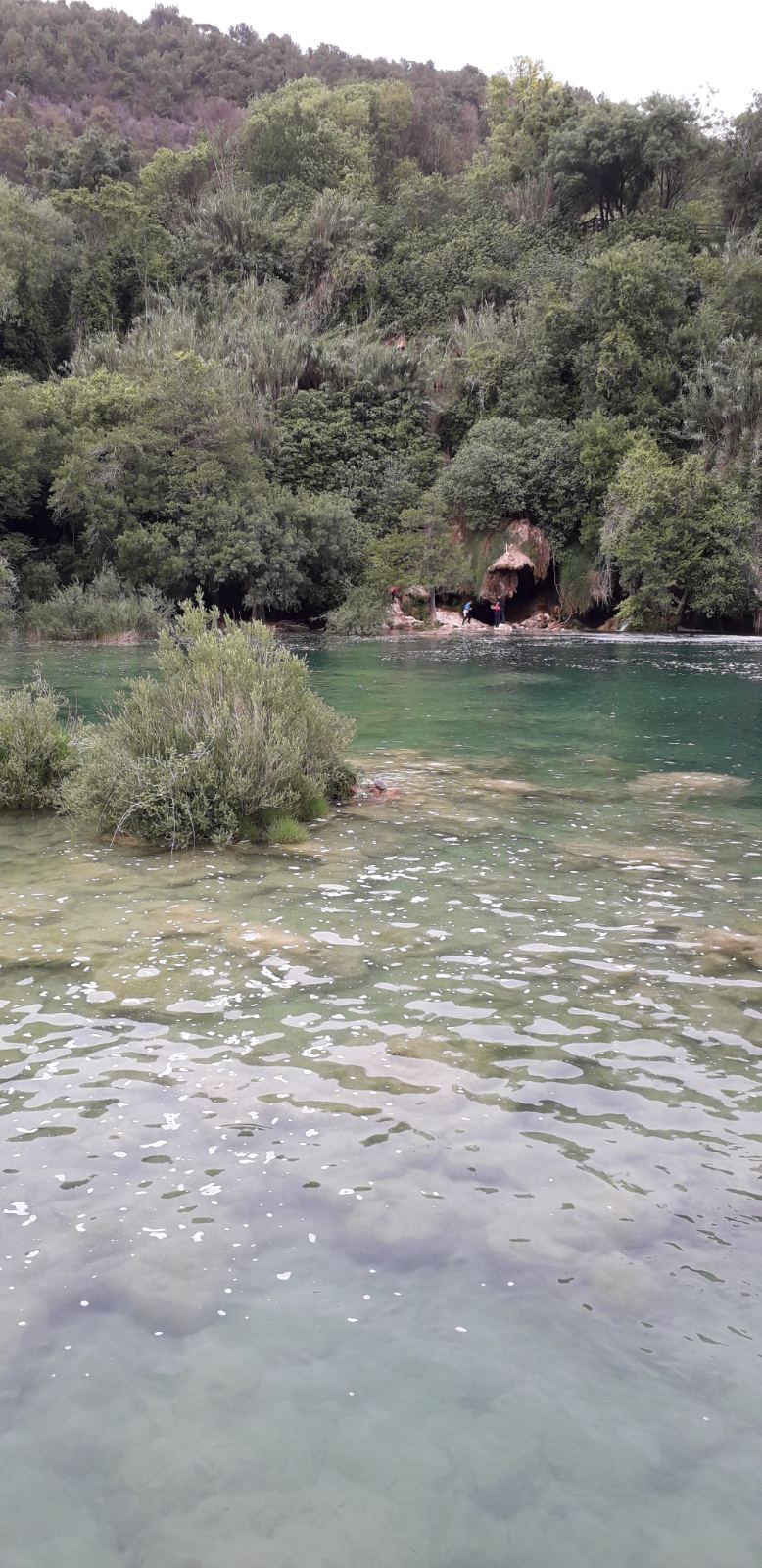The magnificent Skradinski buk waterfall is once again home to European pond turtles
18/09/2021
The strictly protected species of European pond turtles (Emys orbicularis) has again found a secure haven beneath the longest European travertine barrier after a long absence; a habitat has been confirmed of an adult with two young individuals.
In the Krka National Park, the European pond turtle has ideal living conditions, and it is most numerous in the middle and upper reaches of the river, particularly along the shores around the Krka monastery. The marsh at the foot of Carigradska draga is an exceptionally important habitat for the pond turtle. The reduction in the numerous of visitors, caused by the pandemic, has caused the pond turtle to return to the area of the Skradinski buk waterfall after many years. The swimming ban at Skradinski buk has further reduced pressure on the aquatic ecosystem, and this year egg laying was noted. The natural habitat of pond turtles is stagnant and slow-flowing freshwater rich in vegetation, such as at lakes with muddy bottoms, ponds, rivers, canals, floodplain woods, and brackish water. As a cold-blooded animal, it prefers a quiet spot where it can sunbathe, mostly on stumps and rocks.
The pond turtle is a strictly protected species under the Nature Protection Act, the European Union Directive on the Protection of Natural Habitats and Wild Fauna and Flora (Habitats Directive), and the Convention on the Conservation of European Wildlife and Natural Habitats (Bern Convention). Emys orbicularis is a target species for the ecological network Natura 2000, a conservation area important for species and habitat types HR2000918 on the Krka River and the surrounding plateau. The name Emys comes from the Greek word emys, which means “freshwater turtle”.





In addition to the daytime, the pond turtle is also active at night, when it hunts and explores the surroundings, but it never strays far from water. It mostly feeds on invertebrates, among many types most often beetles, snails, shrimp, earthworms, and tadpoles, less often on amphibians and small fish, and least of all on aquatic plants. It has a hard, bony shell, but it is more flattened than that of a land-dwelling turtle and also slightly wider at the back. The length of the shell for the Mediterranean populations is around 15 cm. It has five quite visible toes with claws on the front legs, and four toes on the hind legs with webbing between.
The males and females can easily be distinguished, size being the first thing to be noted, as the females are larger than the males. As the animal grows, so do the scales, called scutes, which cover the carapace and plastron. They form growth zones, which can be used to determine the age of an individual by counting rings. Like the rings on a tree, they grow concentrically and spread from one corner. The amount of growth itself largely depends on the climatic conditions the turtle experienced. Hence, growth is slower in winter or periods of drought. In unfavourable seasons for growth, individual parts of the rings become thinner and darker, while they become broader in more favourable seasons. Other factors that affect the growth rate are the sex, habitat characteristics, diet type, and availability of food.
For laying eggs, the pond turtle chooses land areas with sandy substrates, rich in the necessary food and safe from predators. Emys orbicularis exhibits temperature dependence for determination of the sex of the embryo, as eggs that are incubated at temperatures below 25° C will develop male embryos, while those above 30° C will develop female embryos. Pond turtles reach sexual maturity at six to eight years of age, when they grow to a length of about 12.5 cm. They are then considered fully developed adult individuals. This development is sensitive and depends on ecological and genetic factors, the availability of food, and quality of the habitat. The earliest record of the presence of pond turtles in the “Kerki” (Krka River) near “Scardona” is dated to 1780 (Chrisogno).
News
JOŠ NOVOSTI IZ KATEGORIJE
International Labor Day in the Krka National Park: the gifting of seedlings and free entrance to the Park
This year, the Krka National Park will join the European campaign “Let’s grow together” and on Labor Day at Skradinski Buk at noon, they will distribute a thousand laurel and lavender seedlings, which visitors to the Park can plant in their gardens and yards
The second edition of the Regenerate Europe conference offers "glocal (global/local)" perspectives for the revival of Croatian tourism on the wings of a renewal of local food production and agriculture.
At the Krka Eco Campus in Puljane in the Krka National Park, a two-day international conference “Regenerate Europe” (in English) is being held on May 2 and 3 (and online) on the topic of encouraging local food production and strengthening the connection between local enogastronomy and tourism
A book from the heart for veterans of the Homeland War
Books were donated to the Šibenik Veterans Center, with deep respect for veterans and their role in the community
Celebrating Earth Day in the Krka National Park: education, recycling, and fun
The Public Institute of Krka National Park joined the celebration of Earth Day again this year, paying tribute to our beautiful planet and raising awareness of the importance of environmental protection
